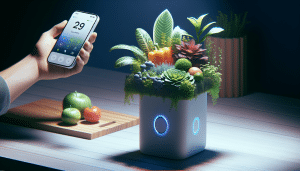Smart Ways You Can Save Water at Home Easily
Henry King September 6, 2025
Explore practical strategies to help you reduce water usage at home, lower utility bills, and support sustainable living. This guide covers smart approaches for saving water indoors and outdoors using everyday habits and affordable upgrades.
Why Water Conservation Matters for Every Home
Water conservation impacts every household, from daily routines to long-term costs. Each drop saved can translate to noticeable utility bill reductions over time. Simple actions like fixing small leaks or turning off the tap while brushing make a significant difference. As urban populations grow and climate change influences reserves, being prepared to save water has become an increasingly important responsibility for people everywhere.
Beyond personal benefits, saving water helps the environment by easing pressure on local sources like rivers and aquifers. Municipalities often spend substantial resources treating, distributing, and sometimes importing water. A smart approach to using less at home supports wider eco-friendly initiatives, ensuring more water is available for agriculture, wildlife, and neighboring communities. Many regions offer awareness programs on responsible use, further highlighting its importance.
Studies indicate that residential water use forms a significant percentage of overall consumption. By making incremental changes at home, everyone can be part of the solution to growing water scarcity concerns. Adopting efficient fixtures, monitoring daily habits, and promoting awareness within households sets the stage for long-lasting savings and climate resilience. Learning where you can cut back is a great step towards protecting a precious resource.
Simple Indoor Water Saving Techniques
Small changes in daily indoor routines create a solid foundation for saving water. Turning off faucets during tasks like handwashing, shaving, or toothbrushing is a habit with immediate impact. Showers often use more water than necessary, especially if left running to warm up. Opting for shorter showers or collecting initial cold water for plants reduces overall use. Everyday decisions add up.
Modern appliances with energy and water-efficiency ratings offer powerful savings. High-efficiency washing machines can minimize water usage per load, especially if you only wash full loads. Dishwashers marked with EPA WaterSense or ENERGY STAR labels typically consume less water and energy per cycle compared to traditional models. Choosing these options is a straightforward step for households to lessen their environmental footprint.
Hidden leaks can waste significant water without homeowners noticing. A simple test is to monitor your meter over a two-hour period with no water use. If the reading changes, investigate for leaks under sinks, behind toilets, or throughout plumbing lines. Replacing worn washers and pipes can prevent expensive emergencies. Maintenance routines like this secure the home’s water efficiency for years to come.
Smart Outdoor Strategies for Conserving Water
Outdoor water use can be a major driver of household resource consumption, especially in regions with long dry seasons. Lawns and gardens often require irrigation, but there are ways to optimize this process. Watering early in the morning or late in the evening prevents loss from evaporation, ensuring soil retains moisture longer. Use of mulch helps keep the ground cool and minimize runoff, improving efficiency without sacrificing plant health.
Consider swapping out thirsty turfgrass for drought-tolerant landscaping or native plants, which usually thrive with less supplemental water. Local gardening centers and municipal websites often provide lists and guides for choosing appropriate species. Drip irrigation systems offer precise delivery, minimizing waste by applying water exactly where it’s needed—right at plant roots. Upgrading to smart controllers can further tailor watering schedules based on weather forecasts.
Rainwater harvesting is an increasingly popular strategy among homeowners interested in conservation. Simple rain barrels or advanced systems collect roof runoff for watering gardens or washing outdoor surfaces. Some regions provide rebates or guidance on designing effective systems. Integrating these practices into your landscape setup can reduce reliance on municipal supplies and create resilient, self-sufficient outdoor spaces.
Upgrading Fixtures and Appliances for Efficiency
Fixture upgrades are a powerful investment in water efficiency. Low-flow showerheads and faucet aerators reduce usage without sacrificing performance. Retrofitting existing fixtures or selecting new models with WaterSense certification ensures compliance with national efficiency standards. Home improvement stores often stock a range of affordable options to suit different preferences and installation requirements.
Toilets are among the largest contributors to indoor water use. Older models frequently demand two or more times as much water per flush compared to modern high-efficiency toilets. Dual-flush designs provide additional flexibility, allowing users to select appropriate flush volumes for solid or liquid waste. Replacing or retrofitting toilets can yield quick returns through lowered monthly bills.
Washers and dishwashers also offer water-saving potential. ENERGY STAR appliances incorporate advanced wash cycles, sensors, and rinses to minimize usage. For many families, making the switch during routine upgrades maximizes savings over the life of the appliance. Utility companies may even offer incentives or rebates for qualifying purchases, easing the path to improved efficiency at home.
Habits That Help You Use Less Water Every Day
Individual behavior directly influences water use. Running washing machines or dishwashers only when fully loaded prevents unnecessary cycles. Rinsing vegetables in a bowl instead of under a continuous tap conserves gallons while collecting water for reuse, such as outdoor plants. Involving kids and guests in mindful usage sets household expectations and helps establish supportive routines.
Awareness of quick alternatives can create lasting impact. Fixing slow drips, insulating hot water pipes for faster flow, and installing timers on showers are all small-scale adjustments that contribute to a bigger resource-saving picture. Communication within the household about efforts and successes can motivate everyone to remain engaged. Success stories shared through community programs often inspire new habits and collective participation.
Tracking and managing household water use is easier than ever. Some utility providers offer online tools or apps to monitor and compare monthly or seasonal patterns. These insights help with setting realistic goals and identifying spikes that may need attention. Establishing conscious water use as a core household value supports environmental goals and builds long-term savings, both financial and ecological.
How Local Programs Support Smart Water Use
Many local governments and water utilities run educational campaigns dedicated to water conservation. These initiatives may include free home assessments, informational sessions, or incentives for purchasing high-efficiency appliances. Materials distributed at libraries, community centers, and online boost participation and supply actionable tips tailored to regional climate and needs.
Incentives such as rebates or discounts help alleviate initial costs for installing new fixtures or rainwater systems. Some areas offer free water-saving kits featuring low-flow showerheads, faucet aerators, and leak detection tablets. Checking local government and utility websites reveals which programs apply to your location and how to qualify for assistance or educational resources.
Community-based challenges foster competition and motivation for households to cut back usage. Recognizing efforts through newsletters, social media, or neighborhood signs cultivates a culture of conservation. Staying informed about emerging local technology and strategies ensures every household has the opportunity to contribute to regional and global sustainability goals.
References
1. U.S. Environmental Protection Agency. (n.d.). WaterSense. Retrieved from https://www.epa.gov/watersense
2. Alliance for Water Efficiency. (n.d.). Home Water Works. Retrieved from https://www.home-water-works.org
3. U.S. Department of Energy. (n.d.). Energy Saver: Water Heating. Retrieved from https://www.energy.gov/energysaver/water-heating
4. University of California Agriculture and Natural Resources. (n.d.). Water Conservation Tips. Retrieved from https://ucanr.edu/sites/UCCE_LA_Our_Environment/Water_Quality_–_Water_Resources/Water_Conservation_Tips/
5. National Institute of Building Sciences. (n.d.). Whole Building Design Guide: Water Efficiency. Retrieved from https://www.wbdg.org/resources/water-efficiency
6. American Water Works Association. (n.d.). Water Use Statistics. Retrieved from https://www.awwa.org/Resources-Tools/Water-Knowledge/Water-Stats-Resources







